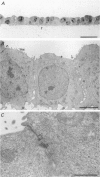Abstract
1. The ionic mechanism involved in Ca(2+)-stimulated electrolyte transport in cultured equine sweat gland epithelial cells was studied using the short-circuit current (ISC) technique. 2. Microscopy revealed that the cultured cells grown on Millipore filters formed polarized monolayers with tight junctions. Monolayers exhibited a mean transepithelial resistance of 333.9 +/- 40.4 omega cm2. 3. Ca(2+)-mobilizing agents, A23187 (1 microM) or thapsigargin (0.01-1 microM), stimulated ISC while forskolin exerted little effect on the ISC. 4. Replacement of external Cl- by gluconate significantly reduced the ISC by 63% when stimulated by 0.1 microM thapsigargin. Residual ISC could be abolished (> 99%) by elimination of HCO3- from the bathing solution. 5. Basolateral addition of bumetanide (0.1 mM), ouabain (0.01 mM) and acetazolamide (45 microM) and apical addition of methyl isobutyl amiloride (MIA, 1-100 microM) all had inhibitory effects on the thapsigargin-stimulated ISC to various extents. 6. Substantial current inhibition could be obtained using 4, 4'-diisothiocyanatostilbene-2,2'-disulphonic acid (DIDS) and diphenylamine-2-carboxylate (DPC) in a concentration-dependent manner. 7. The K+ channel blocker barium (5 mM) was effective on both sides of the epithelium with a much larger effect on the basolateral side. 8. The inhibitory effects of acetazolamide, amiloride, MIA, DIDS and DPC on the thapsigargin-stimulated ISC were also observed when a Cl(-)-free solution was used. 9. The results provide evidence for Ca(2+)-stimulated HCO3- as well as Cl- secretion by equine sweat gland epithelium.
Full text
PDF
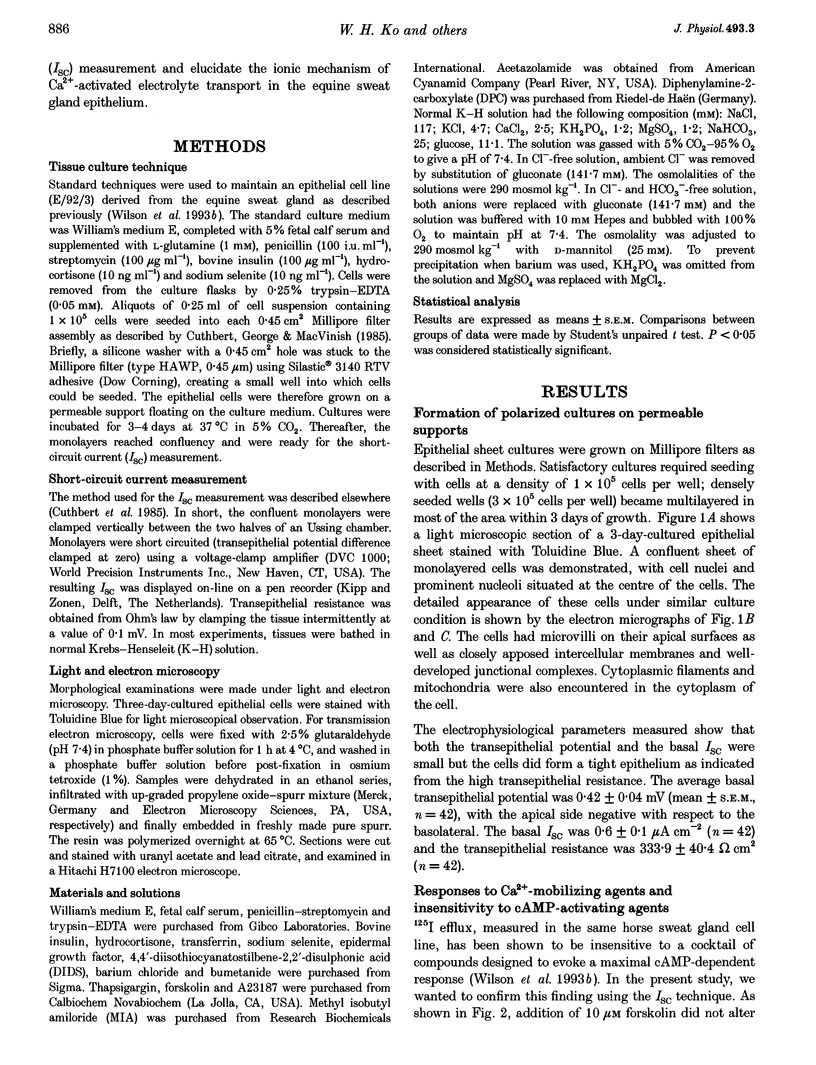
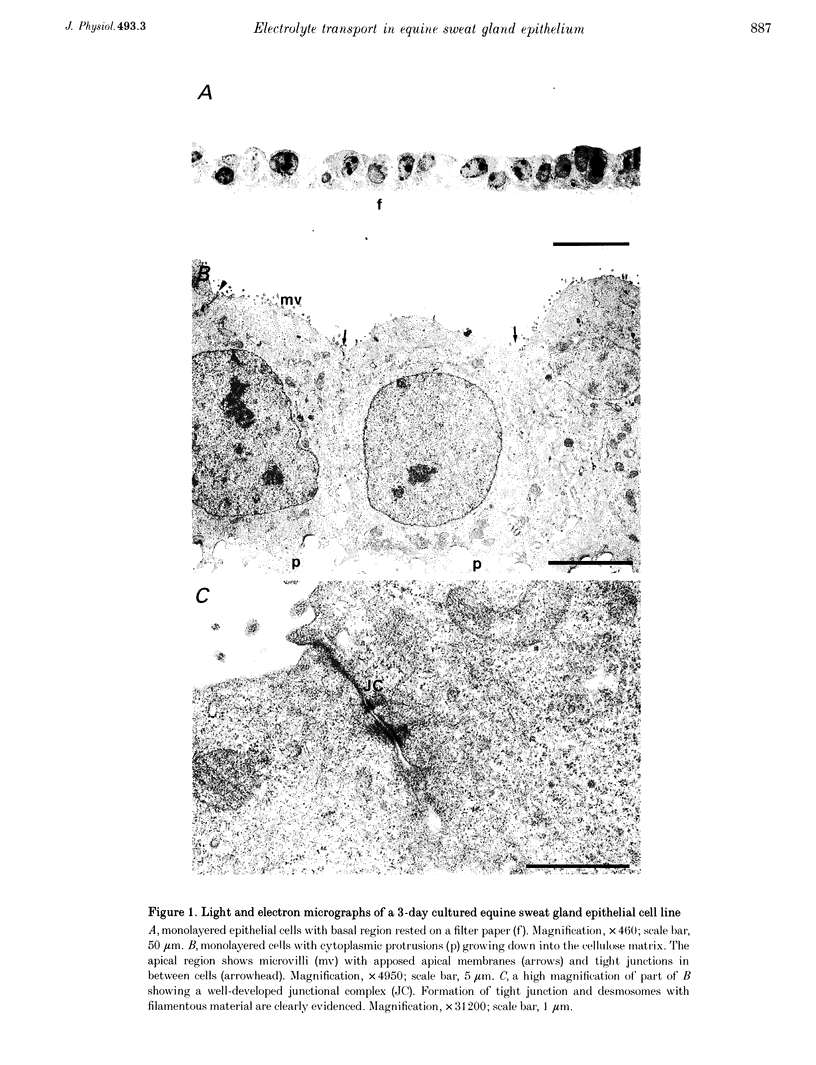
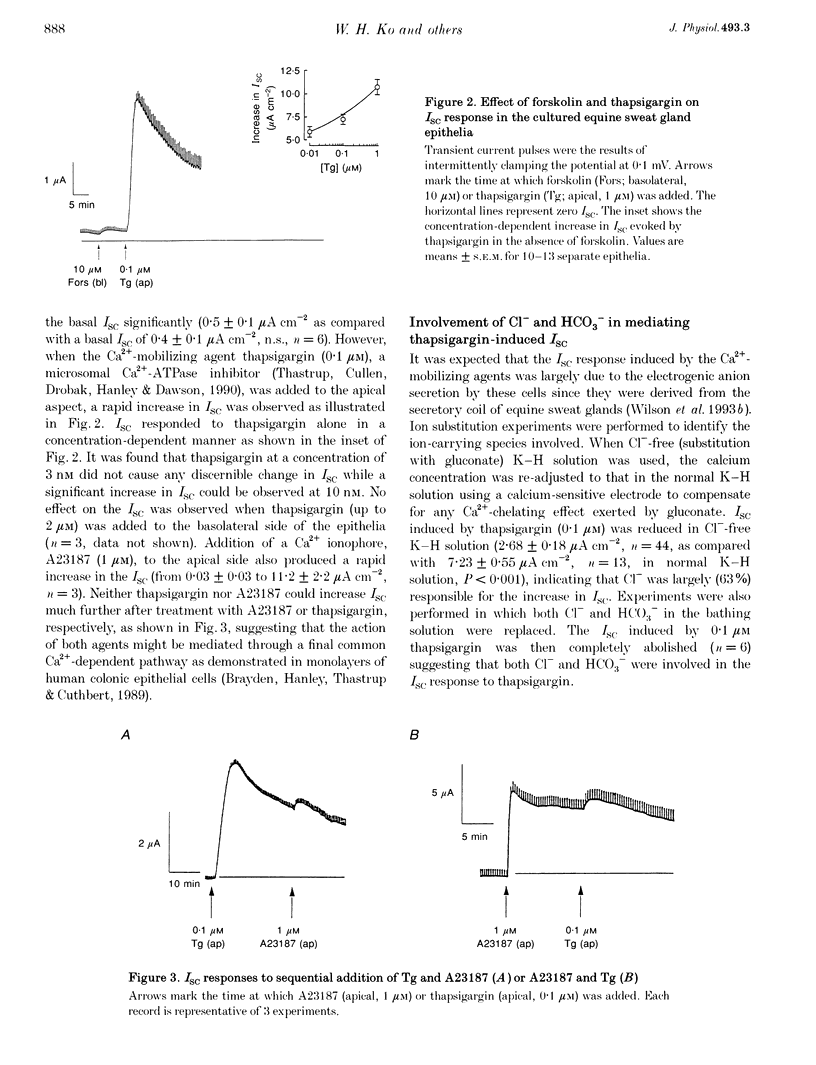
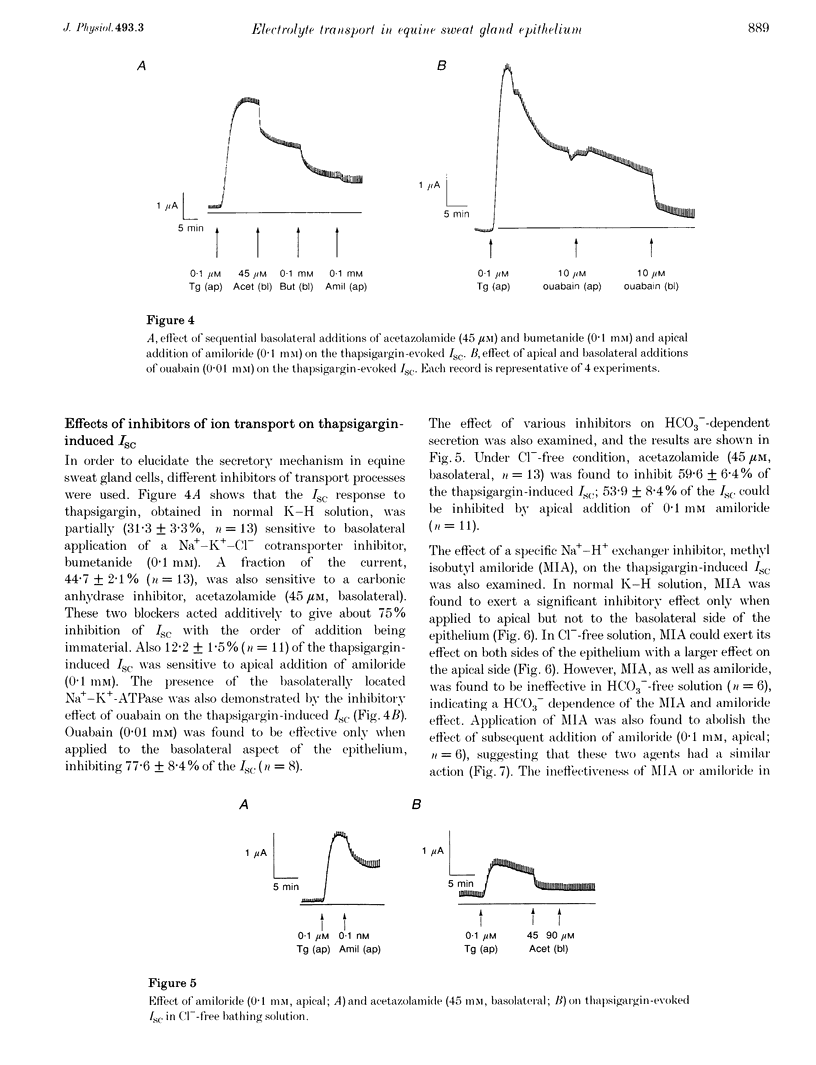
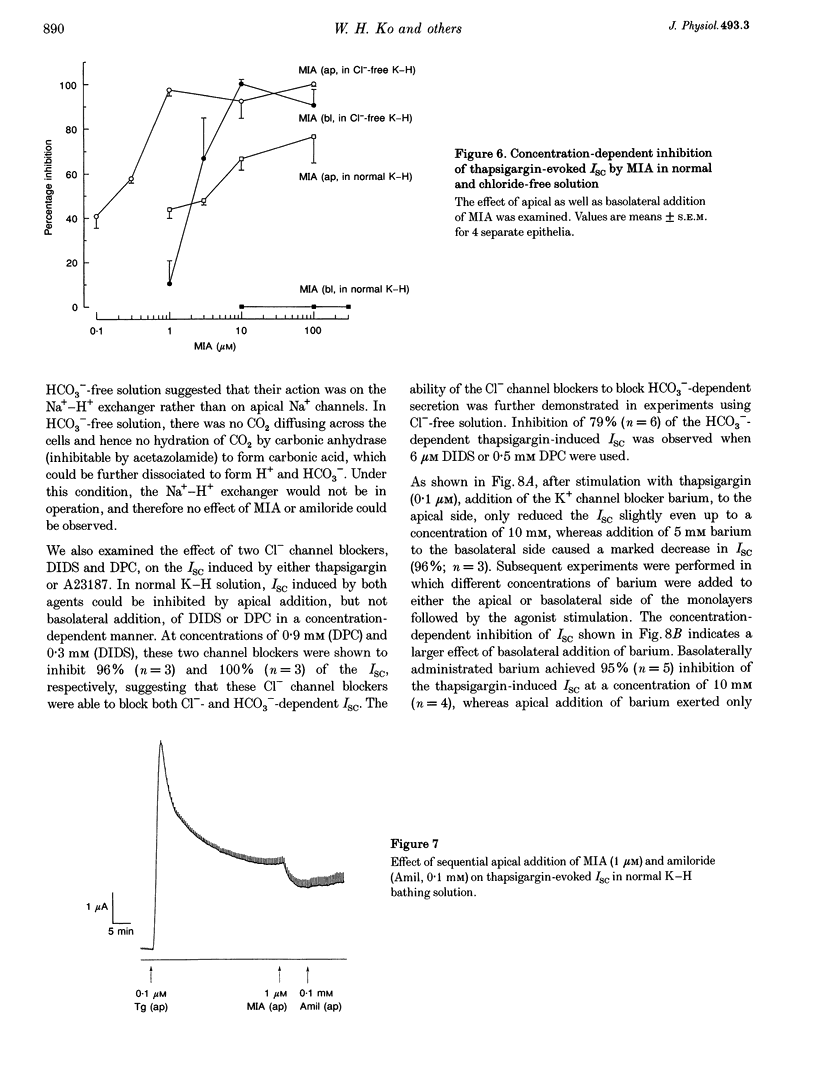
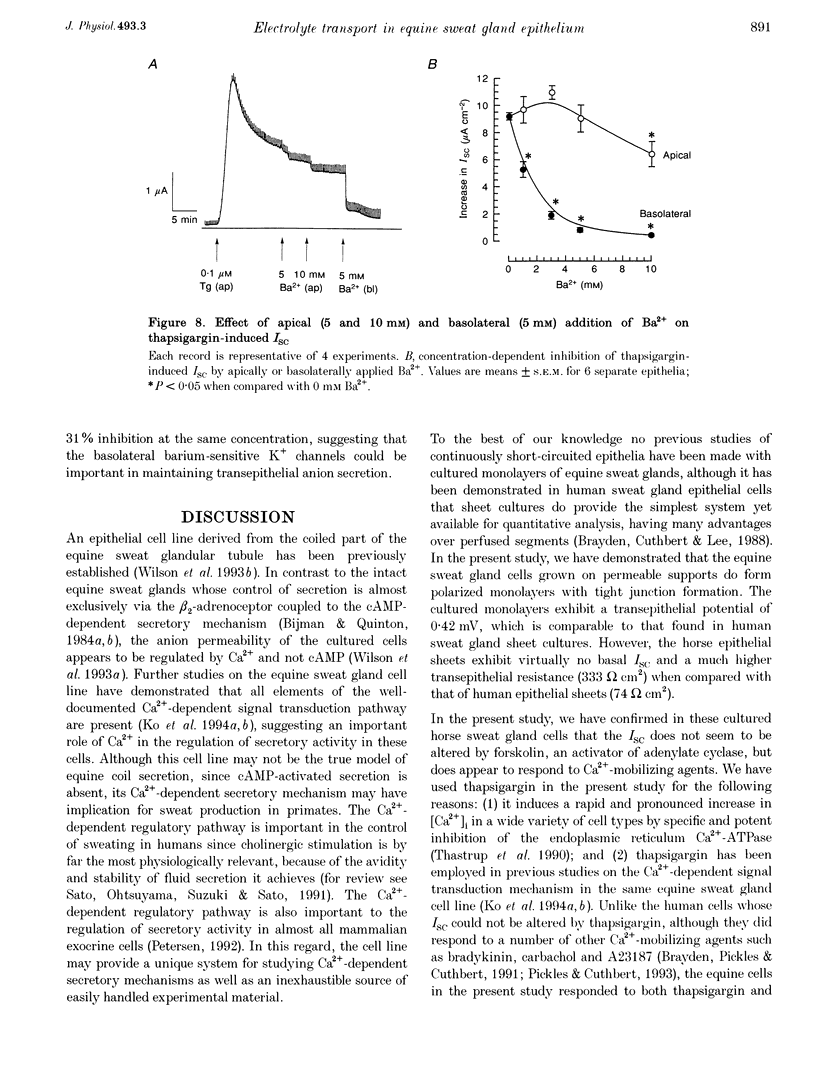
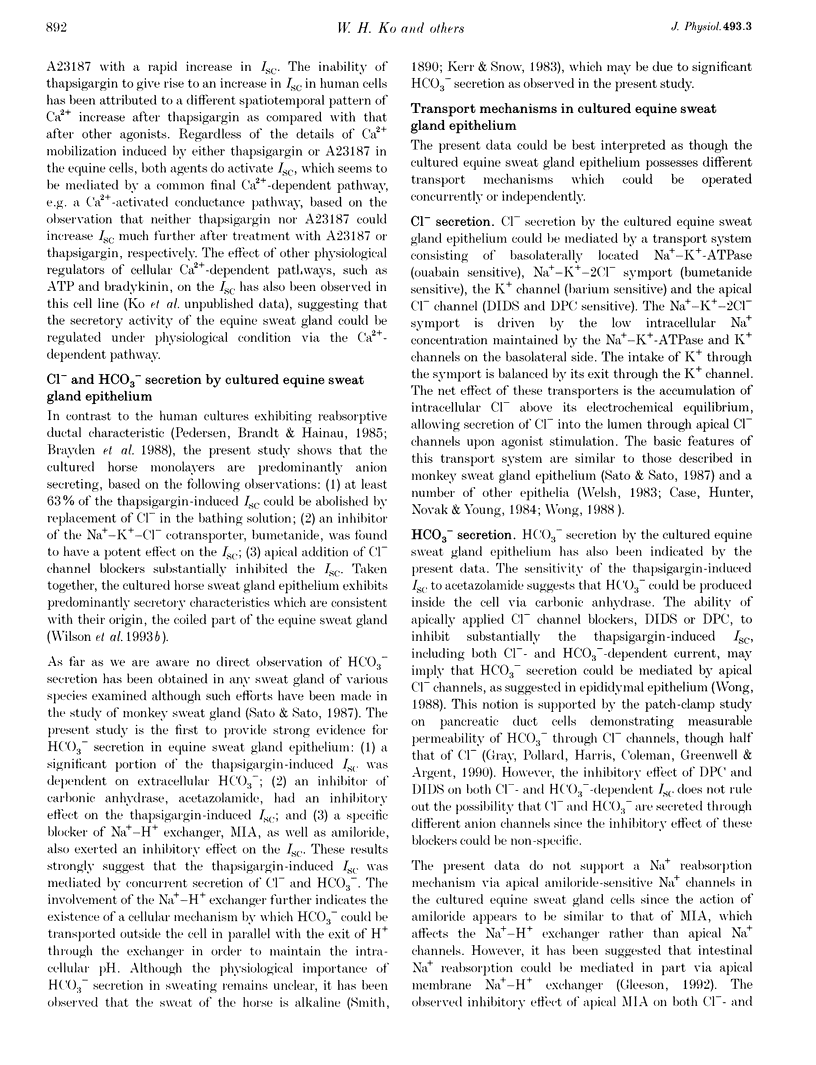
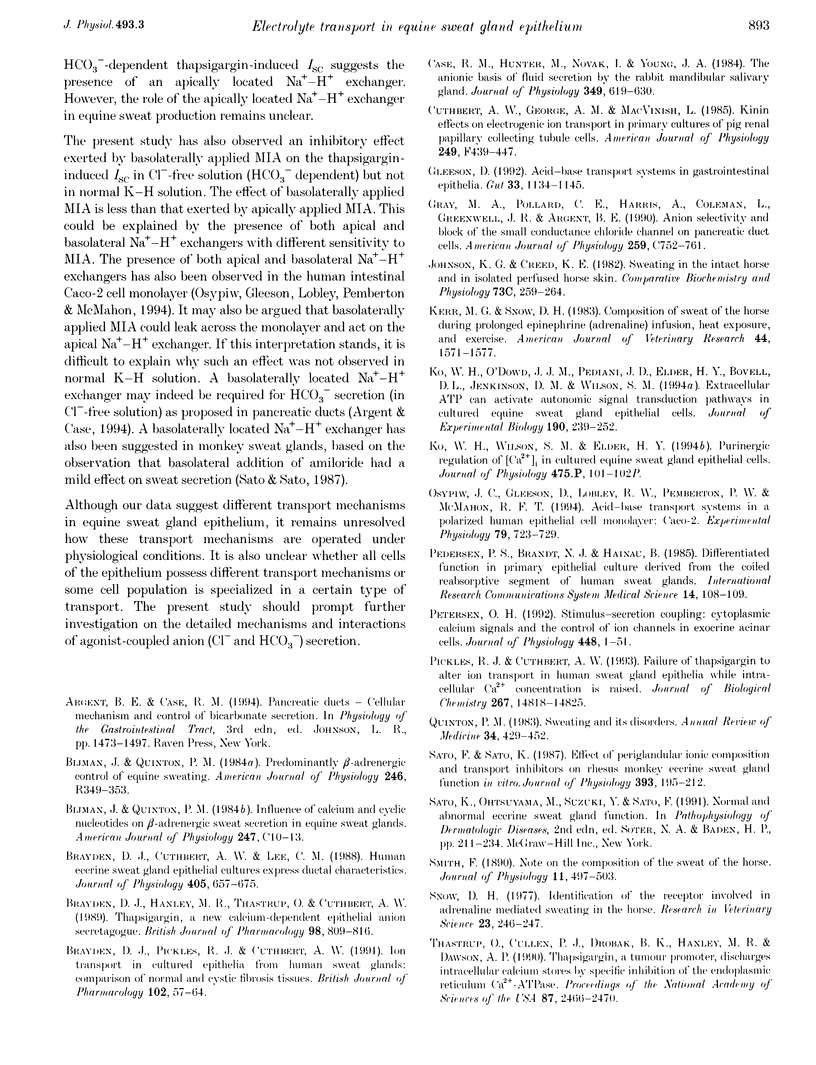
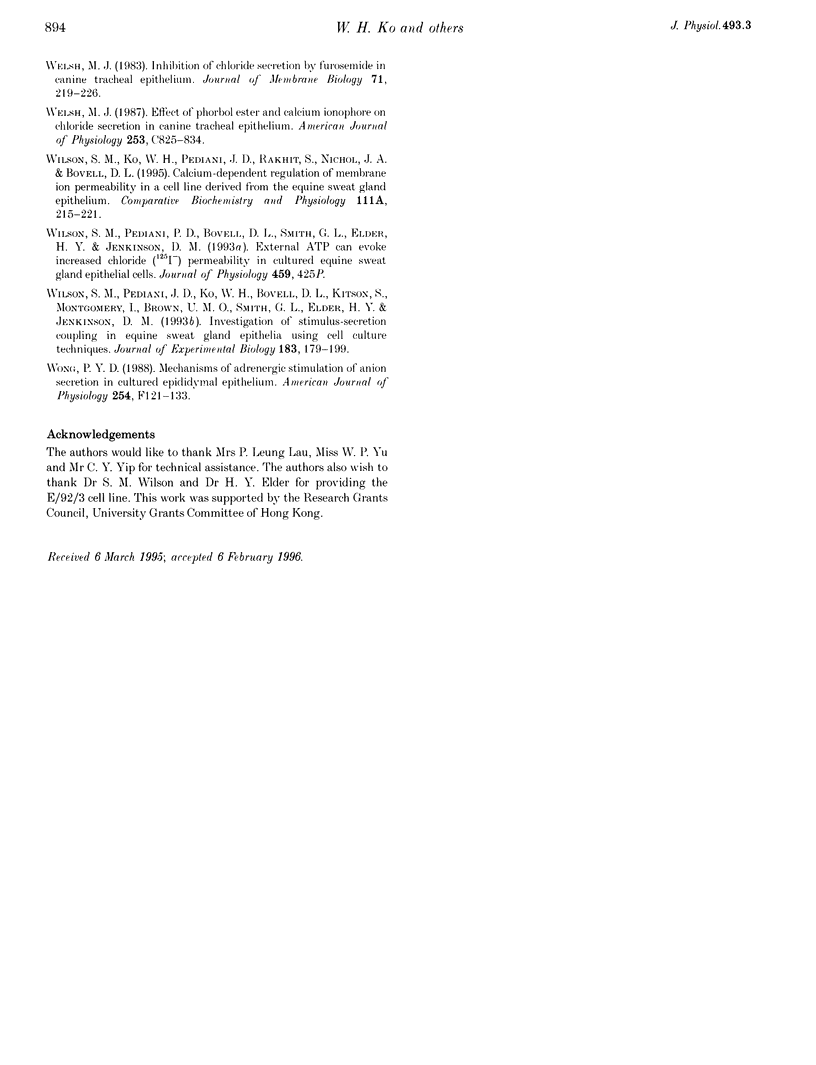
Images in this article
Selected References
These references are in PubMed. This may not be the complete list of references from this article.
- Welsh M. J. Inhibition of chloride secretion by furosemide in canine tracheal epithelium. J Membr Biol. 1983;71(3):219–226. doi: 10.1007/BF01875463. [DOI] [PubMed] [Google Scholar]
- Wilson S. M., Ko W. H., Pediani J. D., Rakhit S., Nichol J. A., Bovell D. L. Calcium-dependent regulation of membrane ion permeability in a cell line derived from the equine sweat gland epithelium. Comp Biochem Physiol A Physiol. 1995 Jun;111(2):215–221. doi: 10.1016/0300-9629(95)00011-u. [DOI] [PubMed] [Google Scholar]



